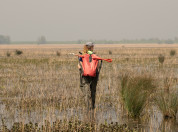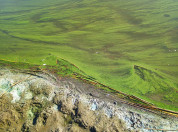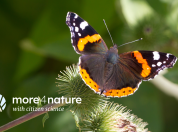Search
Filter by
Type
Tags
Dossiers
Themes
Departments
Active filters
1034 search results
Search results
-
Westeinderplassen
Metadata of the field study (WEP-1) at Westeinderplassen (WEP), Netherlands
-
LTER-LIFE: a research infrastructure to develop Digital Twins of ecosystems in a changing world
The LTER-LIFE lab allows building digital twins (digital replicas) of ecosystems. With these twins, scenarios can be constructed to understand how ecosystems respond to pressures in order to develop effective response strategies. LTER-LIFE will initially focus on 2 of the most extensive and best-studied ecosystems in the Netherlands representing aquatic and terrestrial ecosystems: the Wadden Sea and the Veluwe.
-
Marine harmful algae and environmental change in the Anthropocene
We are offering an internship for a master's student to investigate the responses of marine microalgae exhibiting harmful traits to various global environmental change factors. -
Aniek Albers
Research assistant
-
Up and down the marshes
Lower the water level in a marsh temporarily and you get a more resilient, healthy and biodiverse ecosystem in return. That is the advice of ecologist Kerstin Bouma and her colleagues at the Netherlands Institute of Ecology (NIOO-KNAW). An extraordinary opportunity presented itself in the Oostvaardersplassen to find out how this works. She defended her PhD on that research in the mud and among the reeds on Friday 4 April.
-
Symposium Water Quality Matters
This symposium is open to scientists and stakeholders from various disciplines to discuss pressing water quality challenges from both scientific and policy perspectives.
-
Beavers in the Netherlands: a blessing or a burden?
Beavers were reintroduced to the Netherlands in 1988 and the beaver population has grown enormously since then. About six thousand beavers now live in the Netherlands. In the wild, beavers can have very positive effects on their environment by changing it, but is this also true in human-regulated areas?
-
Ancient blue-green algae bloom more and more
Every summer there they are again, blue-green algae. Why are they a problem, are they getting worse with climate change and what can we do about them? These are questions that the Netherlands Institute of Ecology (NIOO-KNAW) has over the past few years been and still is seeking answers to. The research has provided new insights into fundamental processes, from the cellular level to large-scale changes in lakes and ponds. This allows better assessment of risks and possible development of new control methods.
-
Webinar pollinators in the Netherlands: from data to nature recovery
NIOO is organising a webinar on pollinators and how we can go from all available knowledge to effective nature management. It will be in Dutch. This is part of the EU project More4Nature. If you're interested to join, or know someone who could/should be involved, please read on!
-
Soil Animal Days 2025
Every year around World Animal Day, we go on safari in our own gardens looking for the important but often overlooked soil animals. This year marks the 11th edition of the Soil Animal Days. The annual event organised by a growing number of partners, is now welcoming observations all year round and including from countries outside the Netherlands!
